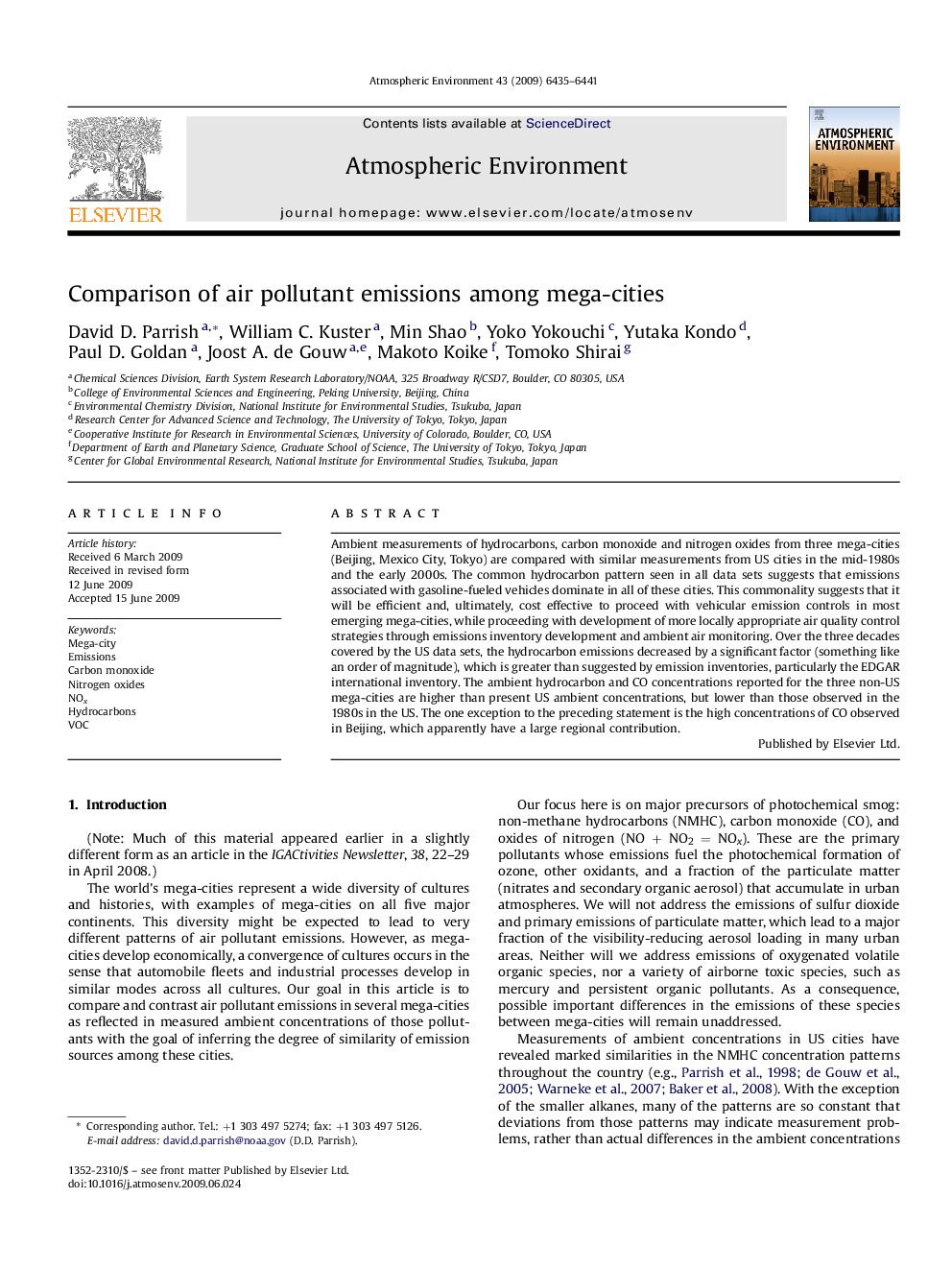| Article ID | Journal | Published Year | Pages | File Type |
|---|---|---|---|---|
| 4441006 | Atmospheric Environment | 2009 | 7 Pages |
Ambient measurements of hydrocarbons, carbon monoxide and nitrogen oxides from three mega-cities (Beijing, Mexico City, Tokyo) are compared with similar measurements from US cities in the mid-1980s and the early 2000s. The common hydrocarbon pattern seen in all data sets suggests that emissions associated with gasoline-fueled vehicles dominate in all of these cities. This commonality suggests that it will be efficient and, ultimately, cost effective to proceed with vehicular emission controls in most emerging mega-cities, while proceeding with development of more locally appropriate air quality control strategies through emissions inventory development and ambient air monitoring. Over the three decades covered by the US data sets, the hydrocarbon emissions decreased by a significant factor (something like an order of magnitude), which is greater than suggested by emission inventories, particularly the EDGAR international inventory. The ambient hydrocarbon and CO concentrations reported for the three non-US mega-cities are higher than present US ambient concentrations, but lower than those observed in the 1980s in the US. The one exception to the preceding statement is the high concentrations of CO observed in Beijing, which apparently have a large regional contribution.
